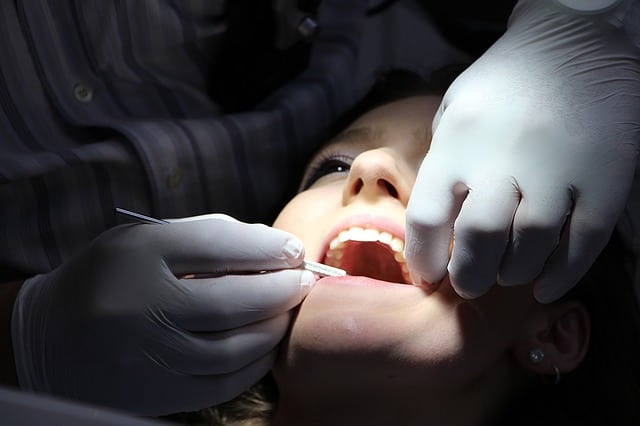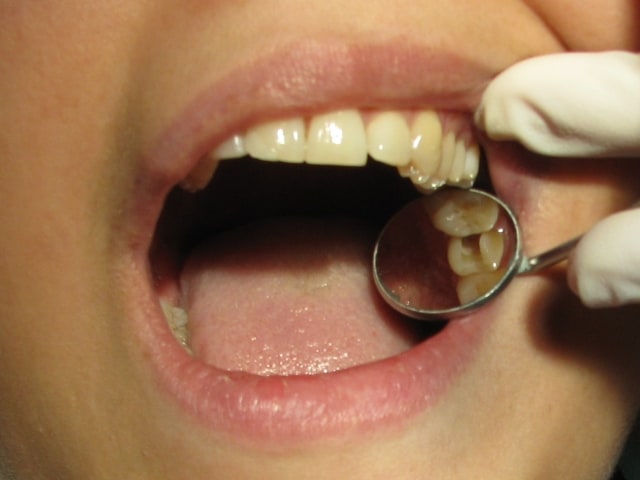LAST UPDATED: JANUARY 24, 2017
Any column about dental braces will inevitably deal with the issue of tooth extraction to deal with crowded or misaligned teeth. Straight teeth are not merely a cosmetic issue; they affect the way we chew and so digest, our food. If you are considering braces for you or your child, you may have wondered if the orthodontist will have to pull some teeth in the treatment process. The answer is that in some cases it may be necessary to extract teeth, but in the majority of cases, there are other options.
FAQ
Why Do Orthodontists Remove Teeth?
There are several reasons for seeking dental intervention. One is to relieve crowding. This can cause dental protrusion (buckteeth) or loss of gum tissue or bone and may result in difficulty in chewing properly. If the jawbone under the teeth is large enough, the orthodontist merely applies pressure to the teeth to move them outward or inward over time. If the jawbone is not big enough to accommodate the teeth, he may be able to use expanders to slowly “grow” the bone.
After age 16 this process does not work because the bone solidifies. Another reason people get braces is to change the lip position. The way our lips appear is determined by the teeth under them. Straightening the teeth can improve something called “lip posture.” If one jaw is a different size than another, the mouth will not align properly and teeth don’t handle food effectively. Misaligned teeth affect the shape and length of the face, too, and may contribute to sleep apnea. For all these reasons orthodontists employ a number of remedies, including extraction if another treatment is not an option.
What About Dental Surgery to Align Teeth?
If there is a pronounced overbite the easiest treatment might be to move the jaw forward or to slide the top teeth back. Either of these may require surgery, and some people prefer extraction of a couple of teeth to a dental operation. Another procedure which may be done, in this case, to make more room for teeth, is tooth slimming. The procedure grinds off the teeth on both sides to make them thinner. This is a process that happens naturally over time anyway (called Attrition). Orthodontists may also employ a TAD or temporary anchoring device to give them leverage against teeth that need to be moved instead of extracting teeth. The bottom line with these procedures is that some people are better candidates for one than another. Even if dental surgery is indicated, the patient may still need braces to straighten the teeth.
What are Invisalign Braces?
Invisalign is a brand name for a clear plastic aligner that fits along the bottom part of the patient’s teeth and is customized for the patient. They work by applying gentle pressure over time. The devices change as the process evolves until the teeth are straight, and they can be taken out for hygiene and eating. Because they are clear and require no rubber bands or wires, they are nearly invisible when worn. Adults find that this system allows them to work with less restriction and discomfort. They also don’t have as many orthodontist appointments usually one every two to two-and-a-half months) so it doesn’t interfere with their schedules the way monthly appointments for regular braces would.
The entire process averages about six to fifteen months, depending on the severity of the problem being treated. Invisalign Teen is a boon to adolescents who have a hard enough time dealing with bad complexions and awkwardness. With this system, casual observers won’t even know they are wearing the devices. They can remove the overlays when they brush their teeth and when they want to eat favorite foods.
What is the Damon System?
Most people are familiar with traditional braces that work with rubber bands stretched over metal hooks to apply pressure to the teeth that need to be moved. In the Damon System, the braces are clear and do not employ metal brackets and rubber bands. The Damon braces never need tightening. The teeth shift on their own through gentle pressure. Because they are not as tight, there is less pain and stress from wearing them. They are tooth-colored and less obvious to casual observers. The treatment period is usually shorter than for traditional braces as well (sometimes as little as six months). Another advantage to this type of device is that they are not removable on a daily basis and cannot be lost or forgotten somewhere.
Whether one of these procedures is better for you over another is something that an orthodontist must decide after an examination. Any consideration of dental devices such as those mentioned above will also be affected by how comfortable an orthodontist is in using them. Gaffney Orthodontics, an office of Nease and Higginbotham Orthodontics, specializes in the latest orthodontic treatments as well as traditional ones. They keep abreast of the latest technology so they can give you many options from which to choose. They tailor their treatment plans to each patient because they realize that everyone is as unique as their smiles.
Contact Us Today for an Appointment
Not every orthodontic office has two experts to examine and treat patients but Nease and Higginbotham Orthodontics does. We make it convenient to drive to our facilities by having three locations in South Carolina:
• Spartanburg Orthodontics
• Gaffney Orthodontics
• Duncan Orthodontics
At our state-of-the-art orthodontic facility, patients have the opportunity to meet with two qualified orthodontists who understand how to determine the most appropriate braces for patients. Anyone with unsightly misaligned teeth can schedule an appointment with a telephone call or online form to talk to:
• Dr. Phil Higginbotham
• Dr. Eric Nease
Dr. Nease Orthodontics
2455 E. Main Street
Spartanburg, SC
29307
(864) 579-7700
Are There Alternatives to Having Teeth Removed for Braces?
Photo credit: Lorenia / Foter / CC BY-NC-ND
GIF Source: http://gph.is/1acGyZ3
[super-post id=”sp551425d46b157″ title=”Related Posts” items=”5″ show_title=”true” title_length=”0″ title_ellipsis=”…” show_thumbnail=”true” remove_no_thumbnail=”false” icon_height=”40″ icon_width=”40″ icon_empty=”1121″ show_comments=”true” comment_icon=”https://nthdegreeorthodontics.com/wp-content/plugins/super-post/images/comments.png” show_date=”true” show_date_link=”true” date_icon=”https://nthdegreeorthodontics.com/wp-content/plugins/super-post/images/date.png” date_format=”F j, Y” show_author=”false” author_title=”View all posts by {author}” author_icon=”https://nthdegreeorthodontics.com/wp-content/plugins/super-post/images/author.png” show_category=”false” first_category=”true” category_separator=”, ” category_icon=”https://nthdegreeorthodontics.com/wp-content/plugins/super-post/images/category.png” offset=”0″ page_range=”5″ load_text=”Load more posts” query=”related” order=”DESC” post_status=”publish” title_trim=”words” load_style=”none” template=”left”]




